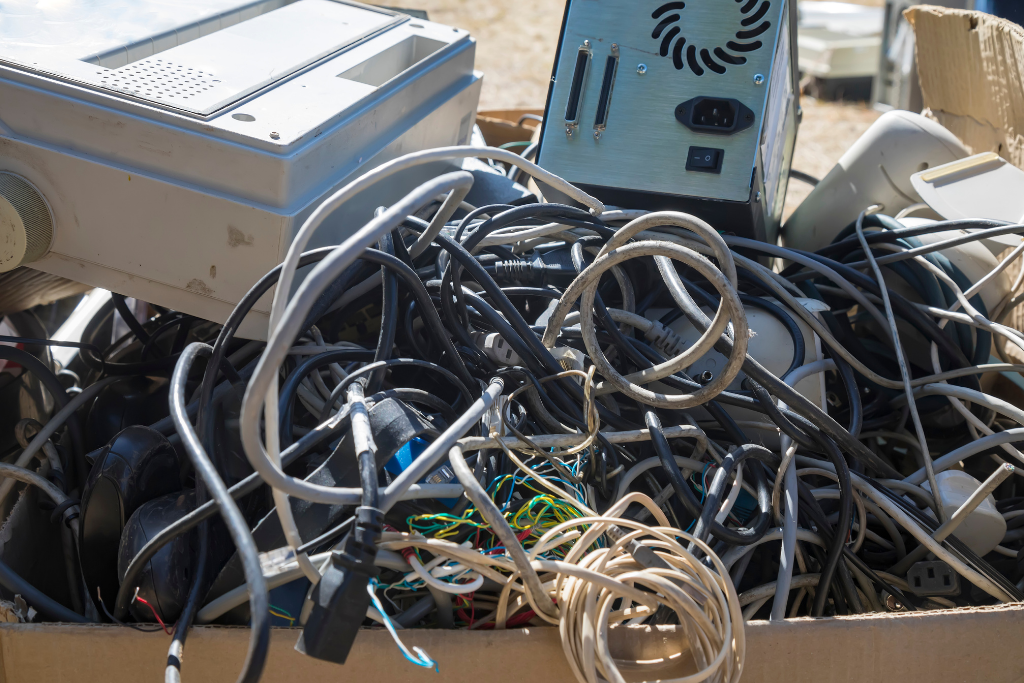E-waste, shorthand for electronic waste, represents an ever-growing global challenge. As our reliance on technology intensifies, so does the importance of addressing the associated waste. This article delves into 11 interesting facts about e-waste to shed light on its dimensions and implications.
Key Takeaways:
- E-waste continues to be one of the most rapidly expanding waste categories worldwide.
- A significant portion of e-waste holds both harmful substances and invaluable resources.
- Responsible e-waste management can curtail environmental harm and optimize resource utilization.
- Only a fraction of global e-waste undergoes proper treatment and recycling.
- Awareness, stringent regulations, and community participation are pivotal for proficient e-waste management.
E-Waste: By The Numbers
| Fact Category | Detail |
|---|---|
| Projected global growth per capita (2023) | 8 kg/person |
| E-waste in 2023 | 61.3 million metric tons |
| Properly treated e-waste (2023) | 17.4% |
| Average smartphone lifespan | 2-3 years |
1. E-Waste’s Escalating Concern
By 2023, each individual will contribute approximately 8 kg of e-waste, significantly increasing electronic waste generation.

2. Monumental E-Waste Volume
In 2023, it’s projected that the world will discard around 61.3 million metric tons of e-waste, surpassing the weight of the Great Wall of China.
3. Hazardous Components in E-Waste
Electronic waste often houses lead, mercury, and brominated flame retardants. These substances can negatively influence ecosystems and human health if not meticulously managed.
4. Precious Yet Underutilized Resources
E-waste brims with lucrative materials like gold, silver, and rare earth metals. Recycling these can be an alternative to intensive mining and its associated environmental degradation.
5. Top E-Waste Generators Remain
Tech-advanced countries like the United States, Norway, and Switzerland remain the leading per capita e-waste producers.
6. The Peril of Improper Recycling
Many countries, especially those developing, lean towards informal recycling practices. This approach poses substantial health and environmental threats due to the lack of standardized procedures.
7. The Importance of Energy Conservation
Manufacturing a new computer still demands 81 times more energy than recycling an existing one. E-waste recycling is thus pivotal for energy conservation and greenhouse gas reduction.
8. Brief Lifespan of Modern Devices
Smartphones, on average, endure merely 2-3 years, driving the rapid accumulation of e-waste.
9. The Imperative of E-Waste Regulation
Governments worldwide are introducing legislation to combat e-waste, with the European Union’s WEEE Directive as a notable example.
10. Health Implications of E-Waste
Direct e-waste handlers face a myriad of health threats, including exposure to toxic elements, leading to respiratory challenges, skin complications, and heightened cancer risk.
11. A Day Dedicated to E-Waste Awareness
October 14th is celebrated as Global E-Waste Day, spotlighting the importance of responsible e-waste management and recycling.

Frequently Asked Questions:
Q: Why is addressing e-waste vital?
A: E-waste management is critical for the environment, conserving resources, minimizing energy use, and ensuring human health and safety.
Q: How can individuals contribute to e-waste solutions?
A: People can properly dispose of electronics, invest in sustainable products, and support businesses prioritizing e-waste recycling.
Q: Are there direct health risks tied to e-waste?
A: Absolutely. Especially for those who handle e-waste, as they confront dangers from exposure to harmful substances, leading to diverse health issues.
To conclude, the ever-evolving facts about e-waste underline the urgency of innovative solutions, responsible disposal, and the importance of sustainable electronics design.
